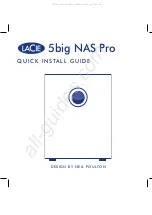
Printer problems
Action
The printer does not
work.
Verify that:
1. The printer is turned on and is online.
2. The printer signal cable is connected to the correct serial or parallel
port on the system. (For the location of the serial and parallel ports,
see “Input/output connectors and expansion slots” on page 11.)
Note:
Non-IBM printer cables might cause unpredictable problems.
3. You have assigned the printer port correctly in your operating system
or application program.
4. You have assigned the printer port correctly using the
Configuration/Setup Utility program.
If the items above are correct and the printer still does not work, run the
tests described in the manual that comes with your printer. If the tests
show the printer is OK, have the system serviced.
Expansion enclosure
problems
Action
The SCSI expansion
enclosure used to work,
but does not now work.
Verify that all of the SCSI expansion enclosure hardware and cable
connections are secure.
Verify that:
1. The cables for all external SCSI options are connected correctly.
2. The last option in each SCSI chain, or the end of the SCSI cable, is
terminated correctly. (See “Termination” on page 81 for more
information on SCSI termination.)
3. Any external SCSI option is turned on. You must turn on an external
SCSI option before turning on the server.
For more information, see your SCSI and expansion enclosure
documentation.
If the SCSI expansion enclosure comes with its own test instructions, use
those instructions to test it. In addition, test the power supply.
If the items above are correct and the test programs found no problem,
have the server and SCSI expansion enclosure serviced.
Software problem
Action
Suspected software
problem
To determine if problems are caused by the software, verify that:
1. Your system has the minimum memory requirements needed to use
the software. Refer to the information supplied with the software to
verify memory requirements.
Note:
If you have just installed an adapter or memory, you might
have a memory address conflict (see “Resolving configuration
conflicts” on page 32).
2. The software is designed to operate on your system.
3. Other software works on your system.
4. The software you are using works on another system.
If you received any error messages when using the software program,
refer to the information supplied with the software for a description of the
messages and solutions to the problem.
If the items above are correct and the problem remains, contact your
place of purchase or service technician for help.
Chapter 6. Solving problems
153
Summary of Contents for eServer 370 xSeries
Page 1: ...User s Reference xSeries 370...
Page 2: ......
Page 3: ...IBM xSeries 370 User s Reference...
Page 32: ...16 xSeries 370 User s Reference...
Page 188: ...172 xSeries 370 User s Reference...
















































